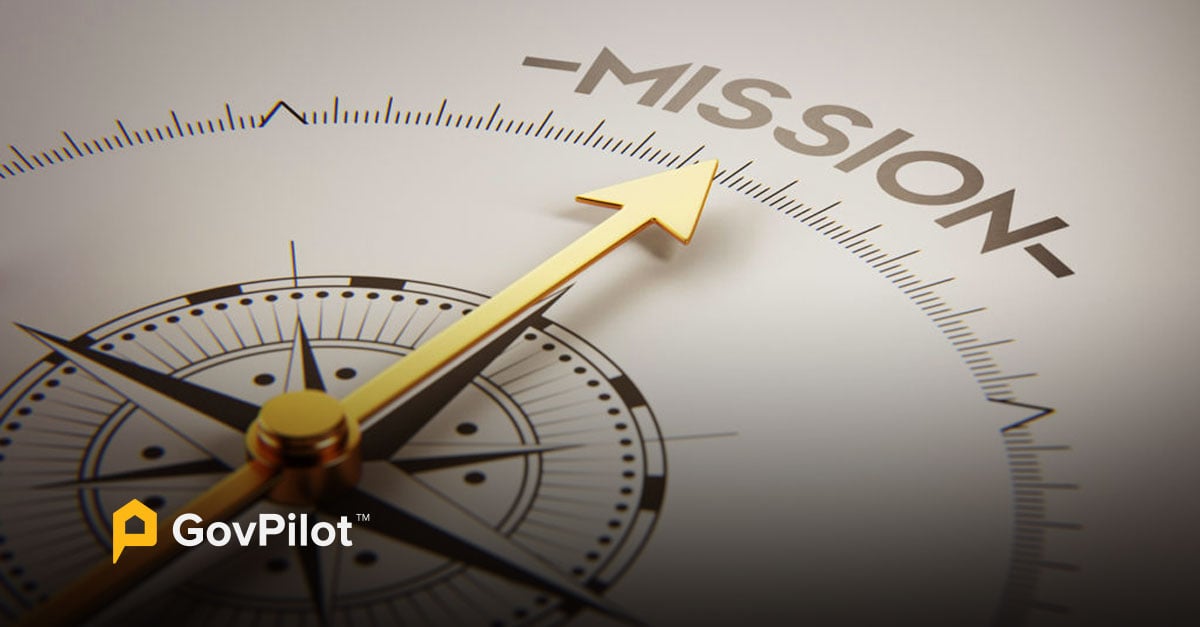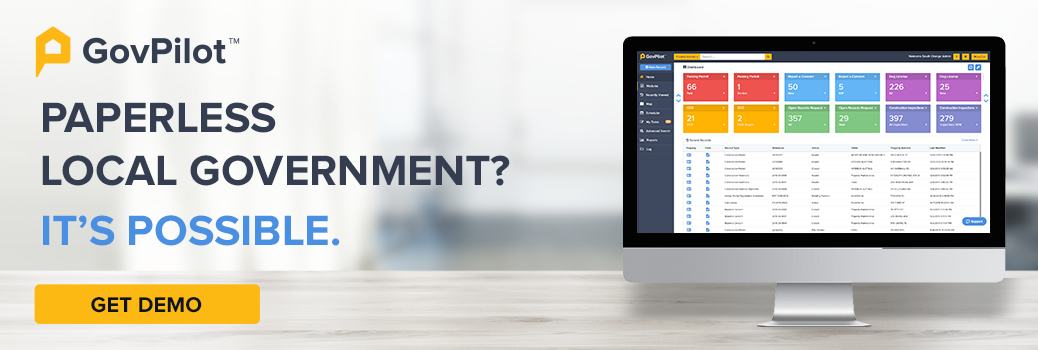Are you someone who prefers to support organizations that operate based on values you align yourself with? Now more than ever, people are mindful about only supporting institutions that uphold values which reflect their own. Failure to highlight and promote your local government’s mission and values can result in less support and decreased community engagement if the public isn’t well informed.
The best way to communicate your local government's purpose, and goals to the public is through a mission statement. A modern, well-crafted mission statement clearly identifies your government’s priorities to the public, and also reminds government officials of the values to uphold and goals to emphasize.
In this guide, we’ll teach you everything you need to know about perfecting a modern mission statement, including: how to form one, how to consider the values of everyone in your community, how to make and execute on goals based on your mission and values.
By the end of this article, you’ll be able to confidently form a modern mission statement based on your community’s values and set actionable objectives to honor the mission statement. Let’s get started!
What is a Local Government Mission Statement?
A local government mission statement is an intentional declaration designed to concisely encapsulate the goals and intentions of the county or municipal government. Well-crafted mission statements create a framework that makes the overall goals of your locality clear to both the government employees and citizens of your community.
Through mission statements, local governments can connect with citizens and directly communicate their future aspirations to the community.
GovTip: Ensure your local government mission statement specifies protections for the disabled community.
Why Do Local Governments Need a Modern Mission Statement?
1. Direct Focus Towards New or Updated Priorities
Priorities in your community may change or evolve overtime as citizens' political views gradually shift. Mission statements should resonate with community members and make them feel informed and connected to their elected officials; this is why it is so important to update your mission statement as your locality’s values inevitably shift over time.
Experiencing changes in your local population? Here’s How Local Governments Can Manage Population Shifts.
2. Showcase The Community Values
Cities are defined by the people who live there and the values they hold. Now more than ever, citizens nationwide have less trust in government than in past years due to lacking municipal services. Showcasing your community’s values will demonstrate how your government is in touch with what matters to its citizens and their lives.
3. Identify Priorities For Strategic Planning
Deciding where to start when it comes to strategic city planning can be difficult. Most localities have many tasks to accomplish and little time to do so. It is important to identify your mission and values first in order to prioritize how to strategically plan and allocate budgets. Your mission and values should act as a guide to direct the decisions of the local government towards the most important projects.
Budget allocation is a serious task, and often difficult to accomplish when there are many things the budget could go towards. However, when allowing the priorities listed in a mission statement to guide government decisions, the local government is showing that they are consistent in funding projects that highlight the shared values of the community members.
How To Determine Key Values That Reflect Your Government and Community
It is of extreme importance that both government employees and community members are equally considered when identifying values that the community stands for.
-
Organization-Wide Communications
Local governments aren’t just made up of the top few important leaders, the shared perspective of every employee is valuable in local government. Your government leadership should correspond with people of all levels in your government offices to truly understand what matters to them and their personal missions.
Approaching the employees of your local government with the intention of learning about their hopes for the government will provide your leadership with valuable insight regarding the goals of government workers.
Improve your government communications strategy by directly asking questions about your government employees’ personal values:
- Which issues matter to your government employees?
- Why did they choose to get into governance in the first place?
- What progress would they like to see made in the future?
- What current bottlenecks are preventing them from seeing their goals fulfilled?
Pro Tip: City administrators and leadership should prioritize getting feedback from their staff during their government employee performance reviews.
-
Public Correspondence
Correspond with your constituents to learn about their hopes and values. Public meetings, social media, and complaint management software are all effective ways to truly recognize the issues that matter to citizens across demographics throughout your community.
Inquire about goals citizens have for the future of their community by asking questions such as:
- What are citizens addressing in public meetings and on social media?
- What types of issues are they complaining about?
- What changes would they like to see in your community?
Social media can make for a great communication channel around what’s being done by your government and which issues citizens would like to see addressed in the future. Here’s a Guide to Maximizing Social Media as a Local Government.
How to Craft the Perfect Local Government Mission Statement
Follow these tips to ensure your missions statement is as well-crafted as possible:
- Identify your community’s values and goals. Accept input from the community and government employees to reflect what both groups care about.
- Keep it short and sweet. There is no need to be too wordy. Make your statement clear and concise so it sounds powerful and memorable.
- Consider all demographics. Ensure your mission statement works for people in every culture, religion, age, and socioeconomic group; don’t isolate anyone.
- Be forward-thinking. Remember, your mission statement is about the future, not the past. Focus it on goals, aspirations, and future plans.
- Don’t be scared to revise. Mission statements are living documents that can grow and change as the local government and citizens’ values do.
How To Utilize Your Mission and Values To Strategically Plan
Once you have created your local government mission statement, moving forward with future plans for your community becomes much simpler. Follow these tips to build a solid strategic plan for your community:
-
Identify goals that align the values listed in your mission statement.
Select a few realistic goals you plan to achieve for your community that reflect both the values of your mission statement and the community’s needs. All demographics, ages, and socioeconomic classes should be considered when selecting which goals to complete.
-
Analyze data that details how much time and resources you will need to complete your goals.
Metrics and data should always be kept in mind when making plans for your community to ensure tasks are completed in the most efficient way. Follow along in the next section for details about tracking performance data.
-
Allocate budgets with intention.
When you are allocating money to different projects, check in with other government employees to ensure you are prioritizing funding causes that reflect your mission statement.
How To Measure Your Performance Against Your Goals
Local governments have a never ending list of things to accomplish, and hardly enough time or resources to meet their goals. However, there are ways to track the performance of your local government and estimate how much time and money key future projects will require.
Local government KPIs or, key performance indicators, are quantifiable measurements used to gauge the long-term performance of a local government. Once you’ve set your KPIs as measurable goals, government data analytics track the amount of time, effort, and taxpayer dollars the government’s efforts are taking against your benchmarks.
To accurately evaluate the progress of your local government projects, data needs to be collected with government software, which automatically stores all the gathered data in the cloud to be analyzed and make future planning easier.
Learn more about How Cloud-Based Government Data Storage Works.
How to Maximize Productivity and Budgets To Meet Your Goals With Government Technology
Government technology is designed to help your locality meet its goals and be as productive as possible. Here are some ways to maximize productivity and utilize government software:
1. Automate Tedious Workflows
Tedious workflows can be automated to save time and effort of government employees through robotic process automation (RPA). RPA is a process utilizing robotic software to automate digital tasks so that manual processes are no longer required.
2. Utilize Data Analytics
Data can be used to track project timelines, financials, and more against your KPIs and goals to ensure that your local government stays on track and meets benchmarks and budget requirements.
3. Store Data In The Cloud
The government cloud is the best way to easily access files, documents, and data across all departments of the local government. All relevant paperwork, including historical public meeting records, complaint reports, applications/forms and any other critical items can be stored digitally and easily shared with all government employees.
Here’s more insight into How to Use Digital Public Records Technology.
4. Digitize Permitting and Licensing Workflows
Digitizing construction permitting workflows will improve efficiency and get infrastructure objectives completed quickly. Offering pet licensing and other common license forms directly from your government website can streamline citizen services. Automating these processes will save time and money for your municipality that can be reinvested into achieving your mission more quickly.
How Does Online Permitting Software Work? Here’s what to know.
GovTip: If your local government has an announcement or update that the public should be aware of on a grand scale, consider creating a local government press release.
Make Your Government’s Mission and Goals a Reality
Creating a mission statement that encapsulates the values and future goals of your local government is an important step in connecting to citizens and strategically planning the future projects of your locality. To take the next steps of implementing your mission statement into strategic plans for your city, GovPilot’s many resources are available to guide you.
To learn more about how GovPilot’s software solutions can help to achieve your goals across government departments, schedule a free demo.
Local Government Mission Statement FAQs
What should be included in a local government mission statement?
Your local government mission statement should highlight the values of your citizens and local government employees and articulate the types of goals your municipal or county government will be prioritizing in coming years.
Why are well-crafted local government mission statements important?
Well-crafted mission statements are a great tool for showcasing what your local government and community-members care about. Taking the time to craft the statement allows government officials to recognize and prioritize the values and goals that matter most in your neighborhood.
Why do local governments need to track KPIs?
Government KPIs are important to track because they set a measurable benchmark for local government leadership to compare against actual performance.
Read more from the Government Tech & Trends Blog:
- Optimizing Your Local Government Website for SEO & UX
- Local Government Revenue Generation Sources & Tactics
- Local Government Accountability: Operating a Truly Ethical Local Government
- Modern Government Trends, Events, & Technology
- Continuity of Government: Government Procedures During a Crisis
- Government Cybersecurity: How to Prevent Ransomware Attacks
- Local Government Automation: Benefits of Going Digital
- Government Blockchain: How Local Government Can Use Crypto
- How Local Governments Can Encourage Civic Engagement
- Best Software for Government Procurement
- Building Inspections 101: How Municipalities Can Improve Public Safety
- Municipal Planning: Reclaiming Your City Streets
Sources:










